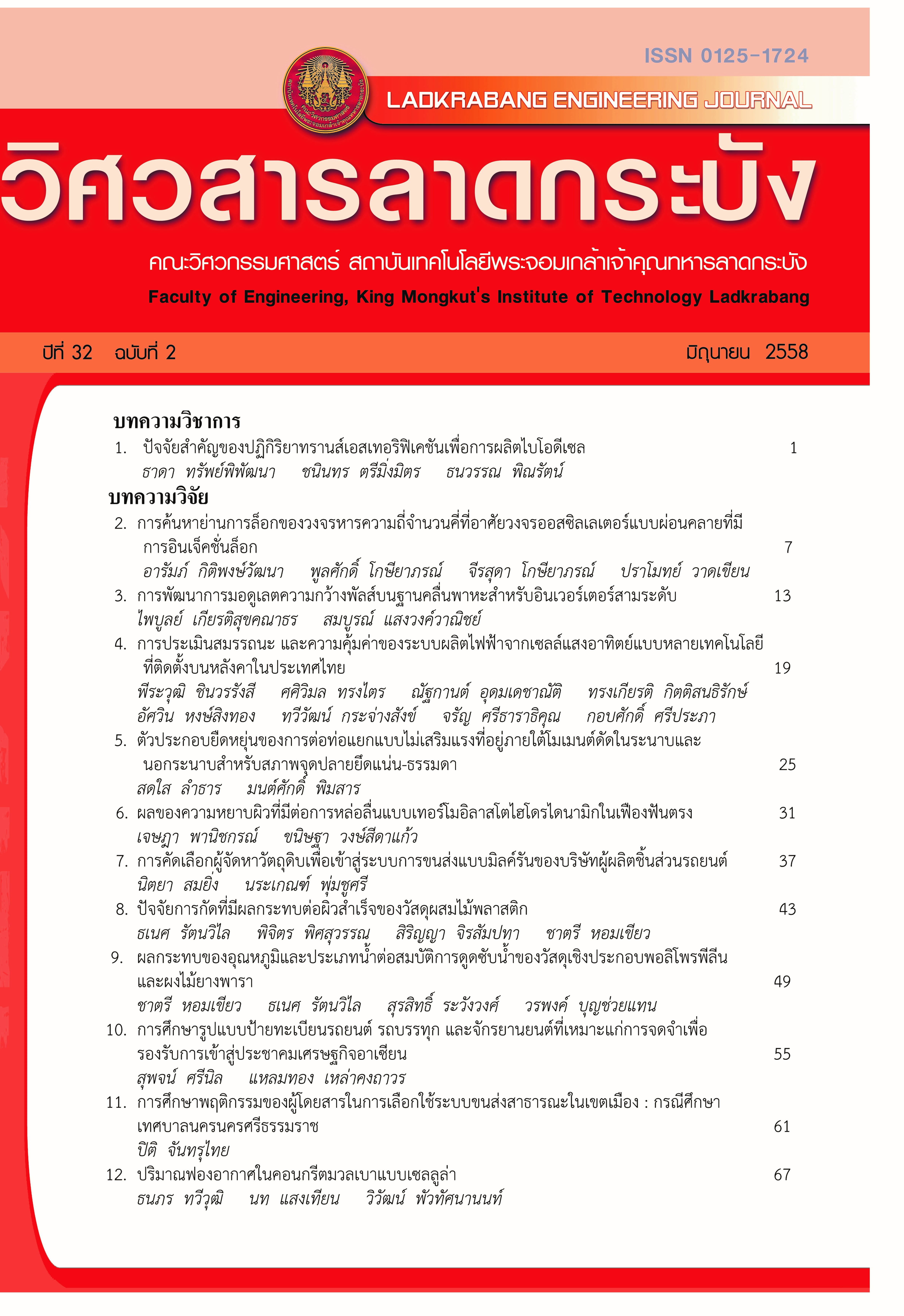Development of a Carrier-Based PWM for Three-Level Inverters
Keywords:
ไพบูลย์ เกียรติสุขคณาธร, สมบูรณ์ แสงวงค์วาณิชย์Abstract
This paper presents development of a carrier-based PWM for three-level inverters. In this paper, the theory of a carrier-based PWM of two-level inverters, as viewpoint of the reference voltages which are the command output voltages and the addition of zero voltage, is considered for three-level inverters. Moreover, the modulation pattern of three-level inverters is also shown that zero voltage had been applying in the same way of the space-vector modulation of two-level inverters. The research results reveal that the developed PWM can be shown the behavior of voltage conversion and straightforward to the relationship between command output voltages and reference voltages.
References
[2] K. Zhou and D. Wang, “Relationship between space-vector modulation and three-phase carrier based PWM: A comprehensive analysis,” IEEE Trans. Ind. Electron., vol. 49, no. 1, pp. 186–196, Feb. 2002.
[3] N. Celanovic and D. Boroyevich, “A comprehensive study of neutral point voltage balancing problem in three level neutral-point-clamped voltage source PWM inverters,” IEEE Trans. Power Electron., vol. 15, pp. 242–249, Mar. 2000.
[4] S. B. Monge, et al., "Capacitor voltage balance for the neutral point clamped converter using the virtual space vector concept with optimized spectral performance," IEEE Trans. on Power Electronics, vol. 22, no. 4, pp. 1128-1135, July. 2007.
[5] B. Velaerts, et al., “A novel approach to the generation and optimization of three-level PWM waveforms for three-level inverters,” in Proc. of PESC, vol. 2, pp. 1255-1262, April. 1988.
[6] A. Saengseethong and S. Sangwongwanich, “A new modulation strategy for capacitor voltage balancing in three-level NPC inverters based on matrix converter theory,” in Proc. of IPEC-Sapporo, pp. 2358-2365, June. 2010.
Downloads
Published
How to Cite
Issue
Section
License
The published articles are copyrighted by the School of Engineering, King Mongkut's Institute of Technology Ladkrabang.
The statements contained in each article in this academic journal are the personal opinions of each author and are not related to King Mongkut's Institute of Technology Ladkrabang and other faculty members in the institute.
Responsibility for all elements of each article belongs to each author; If there are any mistakes, each author is solely responsible for his own articles.






